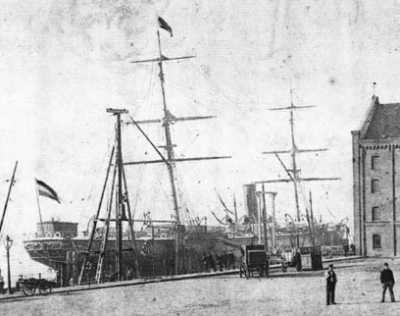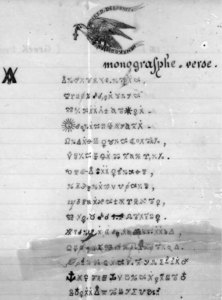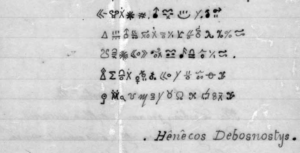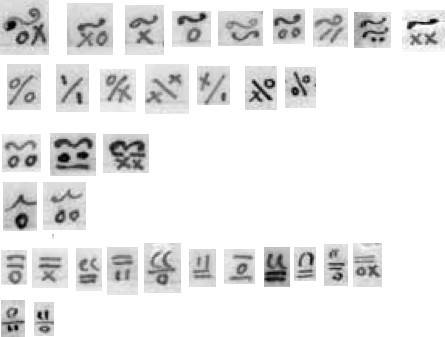As Gerry Feltus’ “The Unknown Man” is to the Somerton Man, Cheri Farnsworth’s all-too-brief “The Adirondack Enigma” is (though densely informative) self-avowedly far from the last word on the mystery surrounding Henry Debosnys. In fact, I think it’s fair to say that many doors in her book remain swinging wide open, waiting for determined readers (perhaps with access to different sets of historical resources) to march through them into the darkness beyond, wearing their well-used +10 Night Goggles of Historical Truth.
Which is, of course, exactly what a fair few Cipher Mysteries readers love to do.
For all of us, though, the central challenge with Henry Debosnys is simply this: that while it seems that a portion of what he told reporters (and while in jail he spoke to them a lot, all the while he wasn’t trying to engineer his own escape) was basically true, a second portion was misspelled or misremembered, and a third portion was outright fabricated. (“Self-serving baloney” wouldn’t be a great exaggeration). And so our difficulty is knowing where each portion starts and finishes.
For example, he wrote in a margin that he changed his name to “Henry Deletnack Debosnys” in October 1870 [Adirondack Enigma p.71] (though without any explanation); and he claimed that he travelled from Havre de Grace to New York aboard the Cimbria in June 1871 with his [presumably first] wife Judith (he says she then died in July 1871, whereupon her body was sent back to France).
Debosnys elsewhere writes that his children were (as of 1883) being brought up by a brother in England: so it is not obvious whether the children he claimed to have were with them on the Cimbria.
However, Farnsworth flags that she could find no archival trace at all of Judith Debosnys’ life or indeed death: which I for one find highly suspicious.
And My Current Hypothesis Is…
Personally, I suspect that what is happening here is that we’re being spun a great big line – a complicated, tangled line, for sure, but a line nonetheless.
I must be clear: there seems no obvious reason to conclude that Debosnys, for all his linguistic brio, was anything more than a manipulative, lazy, grotesquely egotistical sociopath, if not actually an outright psychopath. We cannot directly trust any detail of his claimed life that we cannot verify.
So… might it be that Henry Debosnys had already killed his first wife (who was perhaps called Judith, or perhaps not) back in France (perhaps in or around October 1870), and hence the primary purpose of changing his name was to evade justice? This seems the simplest explanation of all, absent any evidence either way.
Was Debosnys On The S.S.Cimbria?
…and if so, what name was he using? It may well be that the only thing we can trust to be moderately accurate is his age (and possibly his nationality): so perhaps we can produce a list of candidates of the right sort of age who all boarded the Cimbria at Havre Le Grace circa June 1871, and then use other cross-referencing means to try to whittle that down to a small handful.
As a result, I think these are certainly questions that we might be able to answer, if (and only if) Debosnys was moderately truthful about arriving on this ship at around this date.
From this (cached) history of the Cimbria, we can see that it crossed the Atlantic to New York 72 times between 1870 and 1882, before sinking in January 1883. (More pictures here.)
During the year 1871, the Cimbria arrived eight times in New York (according to this): here’s a link to a transcribed list of the passengers on board the ship when it landed in NY on 10th April 1871. According to this page, one person died of smallpox and one was hospitalized on the 21st May 1871 arrival, while two were hospitalized on the 2nd July 1871 arrival. So it would initially seem probable we should be looking at the 2nd July 1871 arrival, right?
The Cimbria’s arrival and passenger list is indeed noted on pp.141-153 of Roll 345. But here’s a mystery for you: apart from a few Swiss and a handful of Dutch, it seems that every non-American passenger on this arrival was actually German. So there would seem to be no reason to think this steamer stopped at Havre le Grace on its way over.
Similarly, Roll 343 covers Cimbria’s 21st May 1871 arrival on pp.118-139: and (again) apart from some Russians, some Dutch, some Belgians and a Mexican, every non-American passenger was German: not a single French person either. Did this stop at Havre le Grace? It wouldn’t seem so.
All in all, it seems probable to me that if Debosnys did arrive on the Cimbria from Havre le Grace, it wasn’t in May, June, or July 1871. The Cimbria definitely did call at Havre Le Grace on other crossings (e.g. 25th October 1871), but apparently not these ones.
Can someone who is tolerably good at reading 19th century American handwriting please have a look at these two passenger lists and see if I’m missing something really obvious?
My prediction would be that Debosnys arrived in New York after October 1870 but before 1872: and that there is a reasonable chance (though far from certain) he travelled on the Cimbria. But until I see anything verified by proper archival evidence, I’m really not sure what to believe about this man: and I strongly recommend that anyone else trying to make sense of this tale should do much the same.







